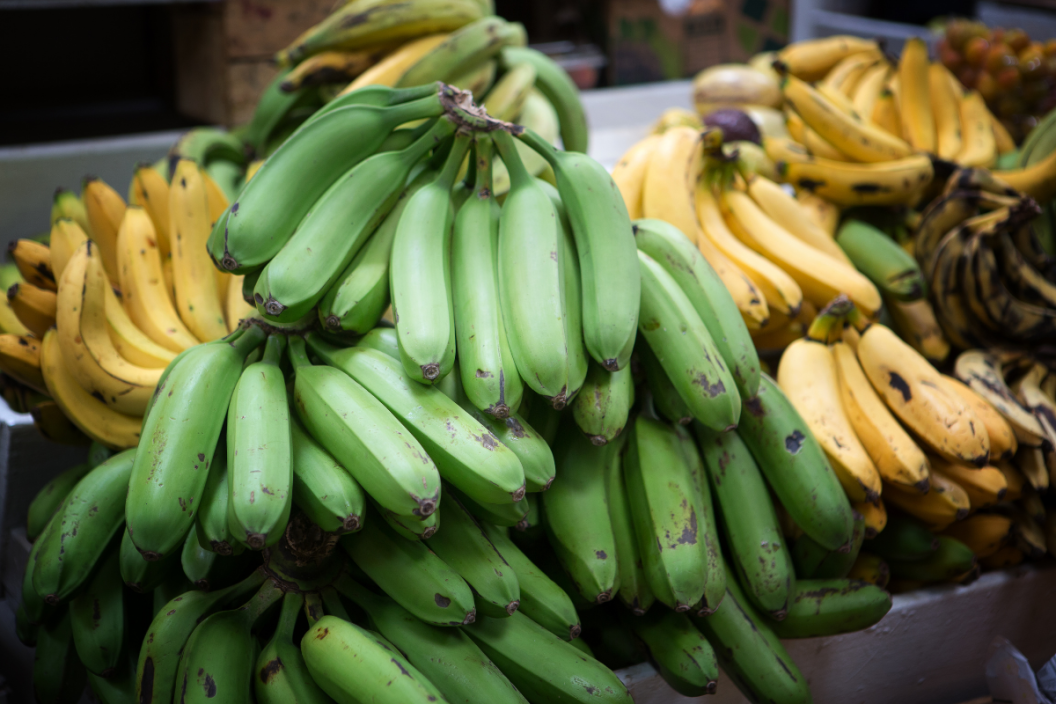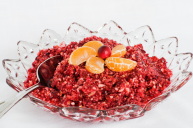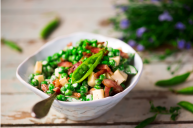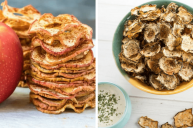If you've ever been in a grocery store or farmer's market and come across a banana that seems a little different, you probably encountered a plantain. While they're easy to confuse in appearance, you'll definitely know which one it is once you take a bite. Bananas are commonly eaten and used in recipes, while their lesser-known cousin isn't something you want to eat without cooking. Despite their near-identical appearance, there are some important differences between a plantain versus a banana!
Similarities of Plantains and Bananas
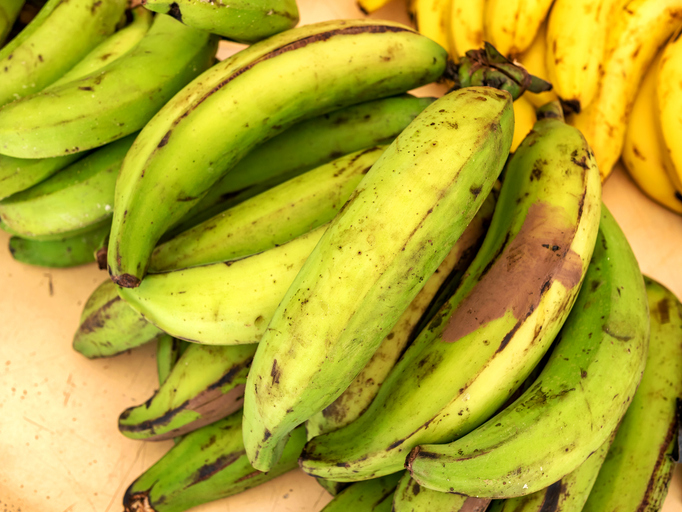
Getty Images
From the outside, these two fruits are very similar. They have the same shape and color, and they grow in bunches. Along with this, they are alike when it comes to nutritional value. Bananas are famous for providing lots of potassium, toted by many athletes as a cure for cramps. Plantains share this quality, and both fruits are also full of magnesium, vitamin C, fiber, and antioxidant compounds.
Plantains and bananas also both provide complex carbohydrates. However, one subtle difference when comparing plantain versus banana is that the carbs in bananas come from sugars, while the carbs in plantains mostly come from starch. Along with this, they have comparable amounts of calories; about 100 per fruit.
Because their nutritional value is similar, these two fruits provide similar health benefits, like their anti-inflammatory and antioxidant properties. Also, because of their high potassium content, eating both fruits will lower blood pressure and reduce the risk of heart disease. Along with this, the large amount of fiber in plantains and bananas is great for digestive health.
You Can't Judge a Fruit By Its Peel
However, aside from their nutritional similarities, there are many differences between plantains and bananas. Most importantly, they taste different! Bananas are sweet, often used in desserts like pie or banana bread, or eaten on their own as a snack. Plantains, on the other hand, are typically on the savory side. They are sometimes called the "cooking banana" because they're not enjoyable to eat raw. When plantains ripen, they become sweeter, but they never taste like a banana.
You can tell the ripeness of a plantain by its color; green plantains are unripe, while yellow/black ones are ripe. Unripe plantains are savory and are used more like a vegetable in cooking, while ripe plantains will be on the sweeter side. Plantains should be treated like potatoes in cooking, and like potatoes, they are typically boiled, fried, or roasted.
Another difference between these fruits is their texture; plantains are starchy and have less sugar than bananas, along with having a thicker skin than their sweet counterparts. Ripe plantains are dry in texture, while ripe bananas have a smooth and creamy texture. Because of these differences, plantains retain their form after cooking, which is why they are so perfect to fry. Although plantains are in the banana family, there are lots of differences when it comes to a plantain vs a banana!
Plantains in Cooking
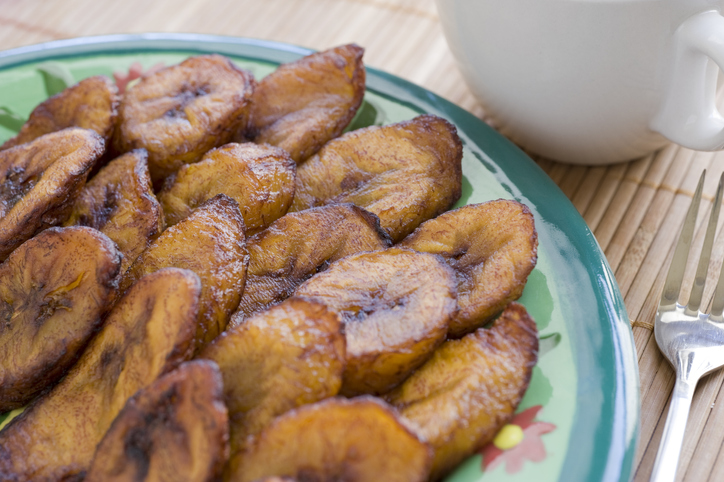
Getty Images
Like bananas, plantains are thought to have originated in Southeast Asia, but they are now grown in many tropical regions. They are a staple of Latin, Caribbean, and African cuisines. In Latin America, plantains are referred to as platanos, which is plantain in Spanish.
Many savory dishes revolve around plantains throughout Latin America and the Caribbean. Tostones are one of the most famous plantain dishes, made from thick slices of ripe or unripe plantains. These slices are fried, smashed, and then refried until golden brown and crispy. These delicious fried plantains are called bannann peze in Haiti.
Another common preparation for this popular tropical fruit is the tasty and snackable plantain chips. To make these, thinly slice yellow or green plantains and fry them until crispy. They are then seasoned with salt and enjoyed as an addicting snack.
In Puerto Rico, green plantains are made into a dish called mofongo, which involves frying them and then mashing them. The plantains are then mixed with garlic, salt, and olive oil and formed into a ball. This Puerto Rican side dish is usually served with pork skin, meat, vegetables, and broth. Although both plantains and bananas are delicious, they are used in very different ways. When it comes to plantains and bananas, you'll know in a bite if you bought the right one!
READ MORE: Our Weekend Plans Involve Joanna Gaines' Banana Bread Recipe
